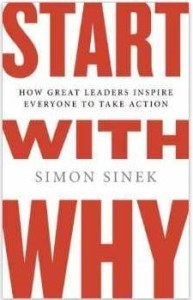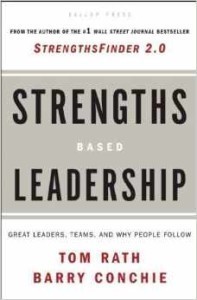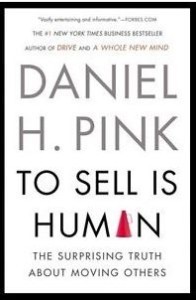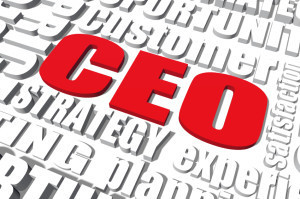Mary E. Marshall's Blog, page 41
April 30, 2014
It Starts With the Right Job Description
 Hiring can be the most difficult aspect of running a business for most entrepreneurs. The hiring process is not clear, the onboarding non-existent, expectations rarely made clear, and the firing after it all goes wrong is the worst part of all. As with most anything, it’s a process and once you have a process that works for you, you increase the likelihood of success.
Hiring can be the most difficult aspect of running a business for most entrepreneurs. The hiring process is not clear, the onboarding non-existent, expectations rarely made clear, and the firing after it all goes wrong is the worst part of all. As with most anything, it’s a process and once you have a process that works for you, you increase the likelihood of success.
This month’s free download is Chapter 4 entitled “Hiring.” I describe the process that has worked for me and many of my clients so I encourage you to use it as a guidebook for creating your own process or upgrading the one you have.
Let’s start at the beginning – the job description. So often I see very lengthy, very detailed job descriptions that list out so many responsibilities that the person would have to be superman or woman to be successful and yet when I ask the CEO or hiring manager to tell me a time when this position was successful, they look at me and say, “well, never now that you mention it.”
That’s why I always start with the job description. It can tell you so much about the position, the company, and what their process is or isn’t. Let’s assume the position is really needed and you want to move forward on hiring. Hiring without a job description is like getting married without dating. It is like a box of chocolates – you never know what you’re going to get – according to the philosopher Forrest Gump. More importantly, how will you know if you have the right candidate without a job description?
The most important part of a good job description? Keep it simple. Typically, people don’t read beyond the first page, (just like in emails), so they scan for the relevant facts and assume they understand. Here’s what I believe makes a good job description:
One or two lines of what success looks like for the position
Job duties and responsibilities
Required skills and characteristics
Desired skills and characteristics
A one or two page description, (two pages for more senior positions if needed), that includes all of the above will go a long way toward selecting the right person. First, describe what success looks like, “this position will lead the sales team to achieve a 20% YOY growth goal while expanding into 3 new countries internationally.“ Now it’s very clear “what” you expect the position to achieve. Next you need about a paragraph to describe what the position actually does on a daily basis – the duties and responsibilities. You can also incorporate this into a success statement if you like.
The next two items are often confused. The first is “REQUIRED” skills, experience or characteristics – meaning, you will not hire someone without them. For example if you say someone has to have an advanced degree, you will not hire someone with a bachelors. You might require 5-10 years of relevant experience. This means that someone with 4 years would not qualify. It’s a good way to test what is really and truly required and what is desired. Remember that it’s hard to require and test for an “outgoing personality” unless you have a specific tool or way to measure personality characteristics.
The second piece is “DESIRED” skills, experience or characteristics. These might look like, “masters degree preferred” or work with a specific product or customer; or the number of people supervised. etc. It is your “perfect” candidate’s background. If you are lucky enough to have this person in-house now and they are leaving, create the description about them, or if you have the wrong person, be sure to include what this person lacked. Focus on successful behaviors and the results those produced.
After you’ve got it drawn up, have a few people both inside and outside look at it for a reality check – is it too ambitious? Does this person even exist? Is it clear? Remember, this is only the first step, but it’s a very important one. It’s so much easier and less expensive to take your time in the hiring process than to make a mistake by going too fast.
The post It Starts With the Right Job Description appeared first on Mary Marshall // CEO Coach.
Leadership Puzzler: How to Have a Successful Hiring Process
 When an employee does not work out, it’s always a disappointment for the company and the employee. No one likes it, we don’t want to talk about it, and we feel like we failed. And it’s expensive! The figures I’ve heard put it at three times the annual salary of the employee, regardless of the length of stay. When you factor in the hiring cost, training cost, loss of revenue, and distraction to the rest of the team, it’s easy to justify this number.
When an employee does not work out, it’s always a disappointment for the company and the employee. No one likes it, we don’t want to talk about it, and we feel like we failed. And it’s expensive! The figures I’ve heard put it at three times the annual salary of the employee, regardless of the length of stay. When you factor in the hiring cost, training cost, loss of revenue, and distraction to the rest of the team, it’s easy to justify this number.
So how do you make sure hiring goes well? Start by reading Chapter 4 of Putting Together the Entrepreneurial Puzzle! Available as a *free* download this month here
Let me share a good example of how one company did it well. After years of trying to get the right sales leader for the organization, a small manufacturer decided he needed to do something different. He had 3 failed hires in as many years and was very frustrated and about to give up. (Keep in mind that in a small company, it’s even more important to get the right person with the right values and skills because everyone needs to be firing on all cylinders. There is no room for someone who can’t perform.)
Improving the Hiring Process
This time, the CEO decided to use a different recruiter, one who asked about his culture, his values and really dug into the long-term vision for the organization. At the time, this was about a 50 person $10M manufacturing company. The recruiter probed about what didn’t work about the last three hires as this gave her a lot of insight into the CEO and the company. She then started the process of recruiting for people she thought might be a fit. She sent a couple of people for the CEO to talk with that were essentially “tests” to see if she was on or off the mark. The CEO liked both, but they were not “quite right,” according to him. I sat down with the CEO and asked to be included on one of his interviews and realized one of the problems was his interviewing skills – or lack thereof. He did all the talking and asked softball questions that really didn’t give him any insight into the person sitting in front of him. Remember, an interview is when the hopeful future employee is sometimes the “best” the employee is going to be so it’s a huge missed opportunity not to have them speak as much as possible.
So after the interview, we worked on how to listen more and talk less, ask more behavior-based questions and suspend his judgment while listening to answers. I asked him to have more of a poker face because he was inadvertently directing the interviewee’s answers. For the next candidate, we came up with 10 questions that related not only to the values of the company, but specific examples of how this person had performed certain things or faced certain circumstances in the past. I took the lead on the interview and as luck would have it, it was a great candidate. We asked him back for a dinner interview, (always meet with high level hires at least twice and in different circumstances), and kept the conversation more casual, to get to know him personally a little better.
The CEO was in love with the guy, but I cautioned him to be slow, and to really talk about what success would look like. We also asked the candidate to create a plan for his first 90-180-360 days as Sales Manager and what results he expected. The plan was brilliant and matched what we were looking for so an offer was made. I’m happy to say this person is still with the company and doing very well, 6 years later. The CEO did try to move him into more of an operational role at one point and that did not go well, so he moved him right back to sales. Remember, just because someone is good at one thing, does not mean it will translate into a different area of expertise.
Why did this hire work when all the others didn’t? Several reasons:
Excellent recruiting process for the values and skills needed
CEO learned how to interview by asking behaviorally-based questions
Clearly defined expectations agreed upon
Every hire is different, but the process is the same. If you take your time, follow the steps and look for values first, then skills, you’ll have a much higher likelihood of success in your process!
photo credit: groundswell via photopin cc
The post Leadership Puzzler: How to Have a Successful Hiring Process appeared first on Mary Marshall // CEO Coach.
April 17, 2014
Want Change? Try Lincoln’s Formula
 My work often takes me into organizations that need to make some fundamental change, but have been unsuccessful doing so in the past. I have thought a lot about how companies get themselves into this predicament and more importantly, how they get out of it.
My work often takes me into organizations that need to make some fundamental change, but have been unsuccessful doing so in the past. I have thought a lot about how companies get themselves into this predicament and more importantly, how they get out of it.
It seems to start with a state of discontent and therefore, unproductivity, because some process, person or product doesn’t work as well as it used to and no one really knows how to address it. It’s usually not that the organization doesn’t foster an open culture and welcome opinions and ideas, (although that can be the problem), it’s more likely that the players don’t even realize they are in the middle of dysfunction. It’s likely things have been slowly declining for a while and people have become complacent, always waiting for someone else to address it, or hoping that it will get magically fixed. Then the discontent starts to bleed on to the customers and good people become disenchanted and leave. The leaders are left wondering what the heck just happened.
The first step in repair is to recognize there is a problem. If the organization is not getting the results, deadlines are not met, and good people are leaving, you have a problem. My guess is that multiple people could tell you what’s going on in two seconds, so as the leader, your job is to ask. Someone will tell you the truth.
Assuming you have diagnosed the right problem, test it out with your senior managers and ask if you have identified the issue. Make it a safe place for conversation and ask lots of questions – most importantly don’t be defensive or you’ll stop getting honest feedback.
The next phase is solving the issue including insuring that it won’t happen again. I like to use the approach outlined in a great article in the Wall Street Journal from February 15, 2014 entitled, “What Would Lincoln Do?” The article talks about how to solve problems and engage people to get behind one’s cause. Lincoln’s approach included the following:
Cite precedent – When has this approach been used successfully in the past?
Make your case – What do you want to do?
Humor helps – Don’t take yourself or the situation too seriously.
Principles first – Always adhere to your values and the company’s.
Be inclusive – No one ever solved a problem in a vacuum.
My guess is that if you take this approach to a solution, whether it’s a small issue or a larger systemic problem, it will eventually get solved. Remember that the key to lasting solutions is that it was everyone’s solution, not just yours. Everyone wants to be a part of a solution – and rarely admit they were part of the original problem.
So next time you know you have a situation where a significant change needs to happen in the organization, ask yourself, “what would Lincoln do?”
The post Want Change? Try Lincoln’s Formula appeared first on Mary Marshall // CEO Coach.
April 10, 2014
Debrief or Repeat
 Debrief, post-mortem or oil change – no matter what you call it, it needs to be done. It is the final step to any project, initiative, strategy or action that more than one person was involved in. The purpose of the debrief is to understand what went well, what didn’t go well and what you would do differently next time. As a leader, it is a perfect opportunity to teach others how to lead, how to learn and how to save time and resources by always working to do better the second time around.
Debrief, post-mortem or oil change – no matter what you call it, it needs to be done. It is the final step to any project, initiative, strategy or action that more than one person was involved in. The purpose of the debrief is to understand what went well, what didn’t go well and what you would do differently next time. As a leader, it is a perfect opportunity to teach others how to lead, how to learn and how to save time and resources by always working to do better the second time around.
So why do we resist the debrief? Often times it’s because we don’t want to look in the mirror and see what we did wrong. However, the problem with that is we don’t learn from our mistakes, and we are therefore destined to repeat them until we finally figure them out.
How Do You Handle the Debrief?
Some leaders agonize over the debrief, and take responsibility, (both good and bad,) for any outcome. While this may be noble, it does not provide any instruction or way to improve, and in fact, makes the leader a bit of a martyr.
Another ineffective strategy for the debrief is to have it take on the tone of a “whose to blame” meeting, which will prevent any constructive conversation from happening.
A similar ineffective debrief strategy is for one team member to write up the results in a vacuum and send them out. This is a one sided monologue and although it may include facts, it does not include the ideas others may have for solutions or different ways of accomplishing the goals.
As the leader, in the debrief process it’s your job to ask the questions without embedding any answers:
State the purpose of the project or initiative
What went well?
Was it aligned with the purpose?
What did not go well?
What could have been different?
Lessons learned?
Another important item to add, depending upon the project is, “who do we have to celebrate?” I would not suggest including this every time, but as appropriate. After you have done a couple of these debriefs with your team, let someone else lead the process. A good debrief should be quick, concise and have actionable items that can be used now or on a future project. The first few will take a little longer, but once you get the process down, 15 minutes should be the norm. The other side benefit to debriefs is that your team will start to internalize the process, and start doing them with smaller, less complicated projects and keep continuous improvement going all the time.
What have you got to lose? 15-20 minutes after a 30 day project? It’s not a lot of time for a potentially large benefit and an invaluable teaching opportunity. If you choose not to do it, just remember that you are losing the opportunity to find out what you did well or could have done better and are therefore doomed to repeat the failures or accidental successes. Debriefs are a powerful and relatively simple investment in your future success.
photo credit: The_Warfield via photopin cc
The post Debrief or Repeat appeared first on Mary Marshall // CEO Coach.
April 3, 2014
Top 3 Business Books Every CEO Should Read
Over the years I have read numerous books on various aspects of business, (as I am sure you have too). In the last 5 years, 3 books have been published that I believe every CEO should read. Each covers a deeply fundamental concept that as a leader, it can be easy to overlook or just not realize. If you want to insure that your leadership perspective is as sharp as it can be, I really recommend these books:
 Start with Why – Simon Sinek
Start with Why – Simon Sinek
If you haven’t already read this one, do so now. As a leader, it will be the best read you’ve had in a while because it will help you understand why people will follow you or not – they need to know “why” they should. Sinek talks about how we are constantly told “how” and “what” someone is doing but until we get to the “why” of the matter, we don’t care. He goes into the science behind it and he does a great job of addressing it in his 20 minute TED talk. As a leader, if you learn how to communicate the why of the matter, you’ll be amazed at the difference in the results.
 Strengths Based Leadership – Tom Rath and Barry Conchie
Strengths Based Leadership – Tom Rath and Barry Conchie
Not only does every leader need a “go to” tool for assessing talent, they need to know how to evaluate leadership potential. Strengths Based Leadership takes the StrengthsFinders Tool and sheds light on which of the four leadership domains we lead from – Executing, Influencing, Relationship Building and Strategic Thinking – and we each have a strength in at least one of these, as do our leadership team members. By knowing this, we can build more effective teams and utilize everyone’s strengths. This is an excellent tool to help grow your people.
 To Sell is Human – Daniel Pink
To Sell is Human – Daniel Pink
This is a great book that demystifies the “selling” perceptions that we all have. Literally, everything we do is selling, we just don’t call it that. And since as the CEO your role is to grow the company, selling is critical. Pink helps illuminate “why” it’s okay to sell. It’s not a dirty word, it’s the way the universe operates. Rather than seeing it as a bad word, or being afraid of it, Pink talks about how we can embrace selling and by doing so, have more success in everything.
I am committed to helping entrepreneurs achieve their dreams and providing resources for them to do so. Reading to develop new levels of understanding is an important piece of this. I have a “Book Recommendations” page on my site with additional books in a variety of areas I believe are really beneficial for entrepreneurs and business leaders. The books in this post are my current top 3 of recent years. What are yours? What books would you add to the list?
The post Top 3 Business Books Every CEO Should Read appeared first on Mary Marshall // CEO Coach.
March 26, 2014
Leadership Puzzler – Who’s in Charge?
 A situation I have been faced with many times as a coach is working with partners, or multiple business owners, most frequently at professional services firms. These are typically well-educated professionals who have degrees in fields like law, accounting, manufacturing, medicine, marketing, architecture and others. Usually, there is an unspoken belief that because of the advanced degree, they are automatically adept at business and leadership, and usually, this is not the case. Even those with MBAs are schooled in theory, case study, and the basics of business, but leadership remains elusive.
A situation I have been faced with many times as a coach is working with partners, or multiple business owners, most frequently at professional services firms. These are typically well-educated professionals who have degrees in fields like law, accounting, manufacturing, medicine, marketing, architecture and others. Usually, there is an unspoken belief that because of the advanced degree, they are automatically adept at business and leadership, and usually, this is not the case. Even those with MBAs are schooled in theory, case study, and the basics of business, but leadership remains elusive.
At one time I was coaching the leadership team of an architectural firm and there were three equal “partners” or owners. No one had an official role other than architect and the business of running the business largely fell to whomever had a little extra time. The result was that projects were late, they never had enough people, and there was resentment among the partners about “whose job it was” to run things.
Bottom line, just like there is never a real “merger” because one company always ends up as the big dog in the deal, there are rarely equal partnerships when it comes to actually running a company. The reality is, one person has to decide, one person has to be in charge, or else you end up with a dysfunctional culture that results in the situation described.
The first thing we did was sit down and go over everyone’s strengths finders profile. Any personality profile will do, but you should use one. This helped to determine where the three partners were most happy – in development roles, in management roles or actually doing the work. Next thing we did was to look at the org. chart and list the functional roles of the leadership team, CEO, CFO, COO, and a role they requested be included, Chief Designer. We looked at the three partners and each identified with a different role (thankfully). So in addition to doing the work on projects, one was designated as the CEO, one took on the role of CFO and COO, and the third liked the role of Chief Designer. We then went through each job description so everyone was on the same page with what it meant. After further discussions, we came up with a communication plan for the rest of the firm.
The funny thing that happened when the announcement went out to the staff was a collective sigh of relief and also a reaction of “duh.” The staff had naturally been gravitating to each of the partners in these roles for a while, but because it was not official, they had been including everyone in the decisions that could easily be made by the one with authority over that area. The other thing we were very clear on was that just because two of the partners essentially reported to the one with the CEO title, it did not negate their ability to vote on company or board related issues as an equal owner. We separated the running of the company from the ownership of the company.
I’m happy to say that this solution worked well and the company continues to thrive with this structure, and with about 40 more employees than they originally had. The structure allowed them to grow and make decisions whereas in the past lack of structure and decision-making were actually constraints.
photo credit: Marco Bellucci via photopin cc
The post Leadership Puzzler – Who’s in Charge? appeared first on Mary Marshall // CEO Coach.
Role of the CEO Leader
 So what is the role of the CEO really? What makes a good leader? CNN Money recently put out its list of the top 50 Leaders and I looked to see what, if any, commonalities there were within this diverse group. There were a lot – intelligence, integrity, passion, and the ability to inspire people to go where they want to lead them.
So what is the role of the CEO really? What makes a good leader? CNN Money recently put out its list of the top 50 Leaders and I looked to see what, if any, commonalities there were within this diverse group. There were a lot – intelligence, integrity, passion, and the ability to inspire people to go where they want to lead them.
However, out of all of those traits, I think “true leadership is the ability to inspire others to rally around your culture and mission and to work toward that vision with you.” In my book “Putting Together the Entrepreneurial Puzzle” I talk about leaders as people who motivate through action, thought and word and who are congruent while living their values.
Leadership also starts with “know thyself first.” This means both from an individual perspective, and also from the perspective of your business. If you don’t know what your strengths and talents are, (or those of your organization), how will you identify them in others? These days the successful companies are those that can attract and retain the top talent in their respective fields and also spot it in others. You need to know what you do and don’t do well.
In practical terms, after the leadership piece, the role of the CEO is twofold: Grow your company and grow your people. First, your role is to continue to grow the company at a rate that is sustainable for the future and continues to grow the value of the company. This happens by defining and executing on the strategic vision, and communicating this in a way that people are willing to follow. Once the vision and execution strategy is solid, next comes the harder part, growing your people.
People are what make products and services successful and every person usually wants to know “what’s in it for me” or the WIIFM of any deal, especially their employment. If there is no growth for them at your company, they will be looking for another opportunity and be out the door before you even notice they’re gone. When employees know you are invested in them, they will be invested in you and your vision. It’s a two way street. They want to know that you care about them, their growth, their contribution and that they make a difference. If you have a small firm, it doesn’t have to be a big employee development program, it can be as simple as tuition reimbursement for a local community college. What matters is that it be relevant and specific to the individual. Help them grow and in turn they will help your company grow.
The last question you need to ask yourself if you’re convinced you are growing your company and growing your people is “Whose job am I doing right now?” This is the one thing that will keep your company stuck in first gear. Either you don’t have someone to delegate to, which means it’s time to hire, OR you are unwilling to delegate because “you can do it faster, better, etc.” This will rob your talent and your company of growth potential. Even if you have no money to hire or even if you can do it better, it’s not a growth path to take either of these options.
I have CEO clients who put sticky notes on their desks with these statements as a daily reminder of what they should be doing:
Grow your company
Grow your people
Whose job are you doing right now?
Only do what only you can do
At this point, I know you’re smiling because we’ve all been guilty of doing someone else’s job – because we can. So resist the urge and start doing your job so you can be the best CEO you can possibly be for the sake of your people and your business.
The post Role of the CEO Leader appeared first on Mary Marshall // CEO Coach.
March 13, 2014
Entrepreneurs Have the Edge
 Great article this week in the Wall Street Journal from the C-Suite (View from the Top) with several observations and comments from those who own the seats. What stood out for me were a couple of key lessons from the entrepreneurs that were interviewed.
Great article this week in the Wall Street Journal from the C-Suite (View from the Top) with several observations and comments from those who own the seats. What stood out for me were a couple of key lessons from the entrepreneurs that were interviewed.
First was entrepreneur Jamie Siminoff’s failure on Shark Tank, to which he said, “so what?” He was able to raise several million for his start-up “Doorbot” after failing on Shark Tank and plans to hire 30 new employees to expand into new markets.
When asked how he knows which idea will be a good one, (he’s had 4 successful start-ups so far), he answered that he has no idea. That’s really the point, isn’t it? Key Lesson: The truth is even previously successful entrepreneurs never know which product or service is going to be the winner. They just keep trying until they find one that resonates with customers and with investors – remember fail fast?
The next piece was from the Chief Medical Officer at Pfizer. She said, “people tend to trust companies they understand and companies that demonstrate they are doing the right things.” This is definitely where the small company has the advantage. Big companies have layers of bureaucracy that tend to prevent, rather than encourage employees to do the right thing. If you’ll recall the phrase – “managers do things right, leaders do the right thing” – when was the last time you saw a leader do the right thing? Chances are it was a small company leader. They have more freedom to trust their gut, to go with their values and intuition, and stand up. Key Lesson: Don’t be afraid to live your values. Customers respect it and will follow you. In the end, if someone has a few extra pennies to spend for a company whose values they support, they will do it, it’s worth it.
The last comment was from Jane Park, CEO of Julep Beauty Inc. She talked about how she has worn all the hats and continues to do so as she builds the business while driving the highway at 100 miles per hour. The point she makes is that because you wear all these hats, you have a unique opportunity to probe your customers about what’s important and what matters to them. Big companies have to spend big bucks on focus groups and research firms. Small companies can just ask their customers because they have that kind of relationship with them – all the time. Key Lesson: All you have to do is ask the right questions and sit back and listen. It’s that unique access that gives small companies a competitive advantage over the bigger guy.
Look at all the advantages that entrepreneurs have. Are you innovating and failing fast? Are you doing the right thing? Are you asking your customers what they think and really listening to the answers? If so, you’re ahead in the great game of business.
photo credit: StockMonkeys.com via photopin cc
The post Entrepreneurs Have the Edge appeared first on Mary Marshall // CEO Coach.
March 6, 2014
Are You a Born, Made, or Accidental Entrepreneur?
 I read an interesting article in Forbes recently that discussed a study about whether entrepreneurship was in your genes. The article referenced several different examples of each type of entrepreneur the study identified and it got me to thinking that perhaps the real question is whether or not it matters to the success of the entrepreneur?
I read an interesting article in Forbes recently that discussed a study about whether entrepreneurship was in your genes. The article referenced several different examples of each type of entrepreneur the study identified and it got me to thinking that perhaps the real question is whether or not it matters to the success of the entrepreneur?
After years of working with many entrepreneurs my sense is that only very few of us are “born” entrepreneurs. You know the type, the kid who has the Kool-Aid stand and actually made money at it. The one who went from job to job, always selling, and saving to start-up “his or her” thing. It’s in their blood. They have to take an idea all the way through execution, come hell or high water. Get out of their way because they mean business. But when I think back, I’ve only met a handful of those types and they are fun, charismatic and usually successful – and they’ve had their share of failures too.
The “made” entrepreneurs are those whose education and experience has led them down the entrepreneurial path. Connections they’ve made and people they’ve associated with draw them into a business plan that seems like it might be workable. There are also family businesses where the kids grow up in the entrepreneur’s lap and decide it’s right for them, much like the children of professionals, (doctors, lawyers, accountants, engineers, etc.), go into the same profession as their parents.
The rest of us are “accidental” entrepreneurs. An odd ball set of circumstances pushes us into business and we see it through. I started running a family scuba diving shop and then became a business broker and was fascinated by how a business works – if you press this lever, this should happen, etc. I did not set out to own or run a business, I just found it fun and found myself leading groups of people toward a vision or goal.
Regardless of how you got there, in the end, success comes down to good leadership and stewardship of the enterprise that you or someone else created. An entrepreneur has to be a leader to get things to happen, but a leader doesn’t have to be an entrepreneur.
In the end, I don’t think one type of entrepreneur is better than the other. However, it is worth noting because each brings different skills to the table. The born entrepreneur is likely gifted in sales. The made entrepreneur is likely adaptable, trainable and willing to learn and partner. The accidental entrepreneur is more the Heinz 57 variety – a lot went into the success and you’ll probably never know which was the magic ingredient
So does it matter which type you are? No, it simply means you bring a different perspective to the game. And as long as you’re open to other perspectives, you’ll stay in the game!
The post Are You a Born, Made, or Accidental Entrepreneur? appeared first on Mary Marshall // CEO Coach.
February 26, 2014
Leadership Puzzler: Culture Change – Is it Even Possible?
 I worked with a brilliant man once who was in the “culture change” business. He went into large companies and helped with mergers of two disparate cultures to move the united company forward or came in after a leadership change to reinforce the new culture. What he said was that he was the “coach” to the organization, not just the CEO, and in that role of coach, he had to first ask questions and really listen to the answers. He always had the most astute insights into the companies “gut” or culture and could usually find the one or two things that would make a course correction. So I’m going to attempt to give you one or two insights into cultural change that might help if you ever find the need to do so in your organization.
I worked with a brilliant man once who was in the “culture change” business. He went into large companies and helped with mergers of two disparate cultures to move the united company forward or came in after a leadership change to reinforce the new culture. What he said was that he was the “coach” to the organization, not just the CEO, and in that role of coach, he had to first ask questions and really listen to the answers. He always had the most astute insights into the companies “gut” or culture and could usually find the one or two things that would make a course correction. So I’m going to attempt to give you one or two insights into cultural change that might help if you ever find the need to do so in your organization.
The short answer is “yes,” it’s possible to change a culture. It’s not easy and there are likely to be casualties along the way in the form of personnel departures, but it can be done. Let’s use the story of company “X.” They are a professional services firm specializing in marketing, sales, graphics and web design. The company was the result of a merger of two smaller companies and the combined revenues were $40M. The founder was still with the company, but not working on a daily basis and the organization was led by a CEO who came from a financial background and had no knowledge of the industry. The sales bumped along at a tepid 5-8% growth rate and some of the management team were getting restless as they were led to believe the vision was to grow to $75M and become an acquisition target. No one was happy and some key individuals were departing. All believed that the founder had no idea what was going on.
So what change needed to happen to get the company back on track? First and foremost it needed to get back in touch with what had made it successful in the past – an edgy, smart bunch of individual collaborators that created amazing work for their clients. They had lost their edge and competitors were circling and picking off their talent. The COO came forward and using the work from Dave Logan’s Tribal Leadership. She started with the leadership team and attempted to define the company’s values. She met strong resistance at first, but after identifying the real problem – that the company had lost its focus and needed a reboot – more people bought into the premise. When the leadership team had agreed on their seven core values and definitions for each, they rolled it out to the entire company. They made little table tents with cool graphics and gave one to every employee to put on their desk. They talked about them in meetings and they even used them to help make decisions in the company – it really became their kiddie bumpers on the bowling alley to avoid making any more gutter balls. New clients started to come on board and employees were “enthusiastic” again. Revenue started to climb at a 10-15% clip, far exceeding earlier projections. The company had its “vibe” back.
So what’s the catch? The only person not on board with values and “culture” was the CEO. He declared it a waste of time and demeaned the effort at every opportunity. Most COOs would have given up in the face of such negativity - especially since it could be a very career limiting move to proceed – but this one didn’t and the more support she had via the tangible results in both morale and revenue, the more she pushed forward. He made an attempt to fire her, but the COO had already gone to the founder with the results and briefed her on the initiative so when the CEO tried to have her fired, the founder intervened. What happened next was the surprise, the founder let the CEO go and promoted the COO.
The troops were thrilled and today the company is thriving under “culturally aligned” leadership. The COO had what Logan calls her “hell no” moment when told to shut down the initiative. She knew it was the right thing to do, so she pressed on.
You never know who the casualties will be of cultural change, you also never know who the stars will be, but there will be both and it’s all okay. Be prepared for resistance, acceptance, brilliance and disappointment, and always be willing to change.
The post Leadership Puzzler: Culture Change – Is it Even Possible? appeared first on Mary Marshall // CEO Coach.



